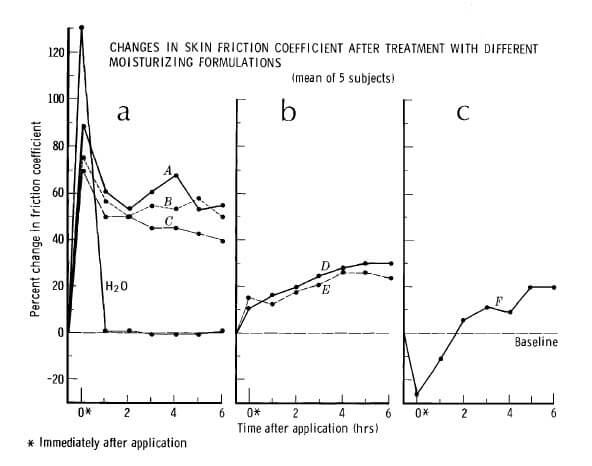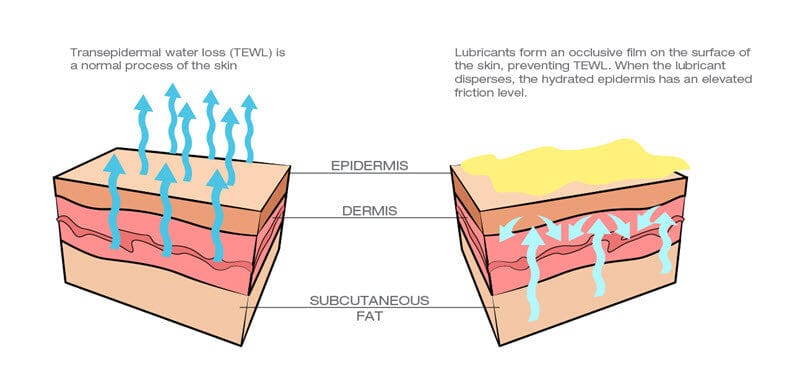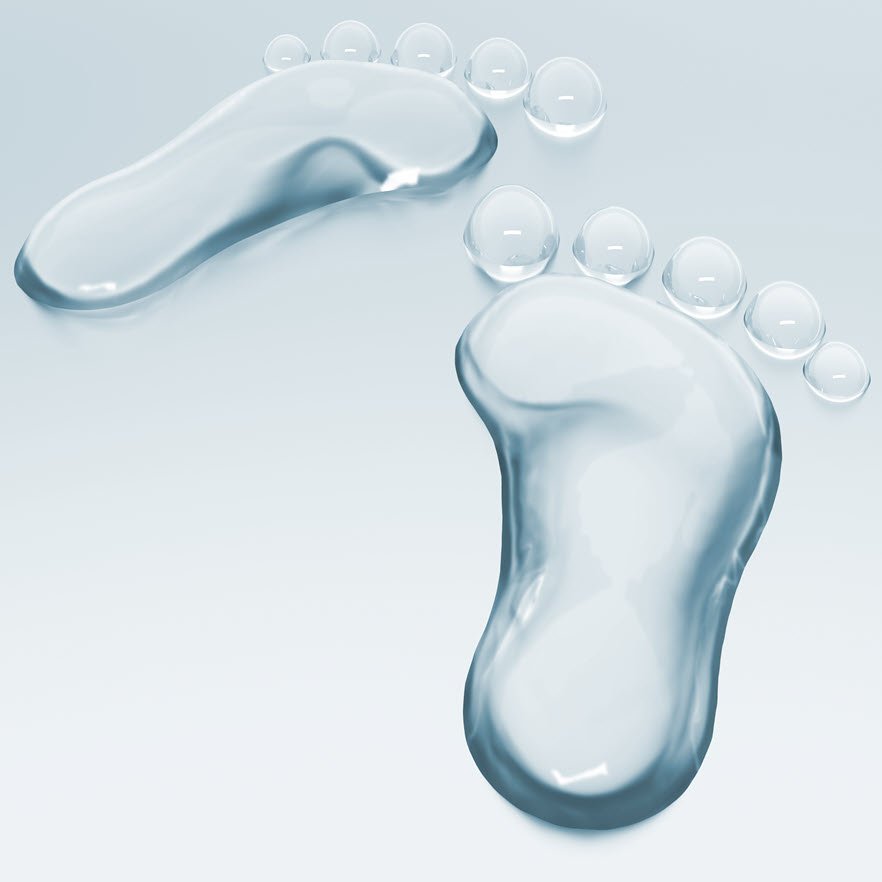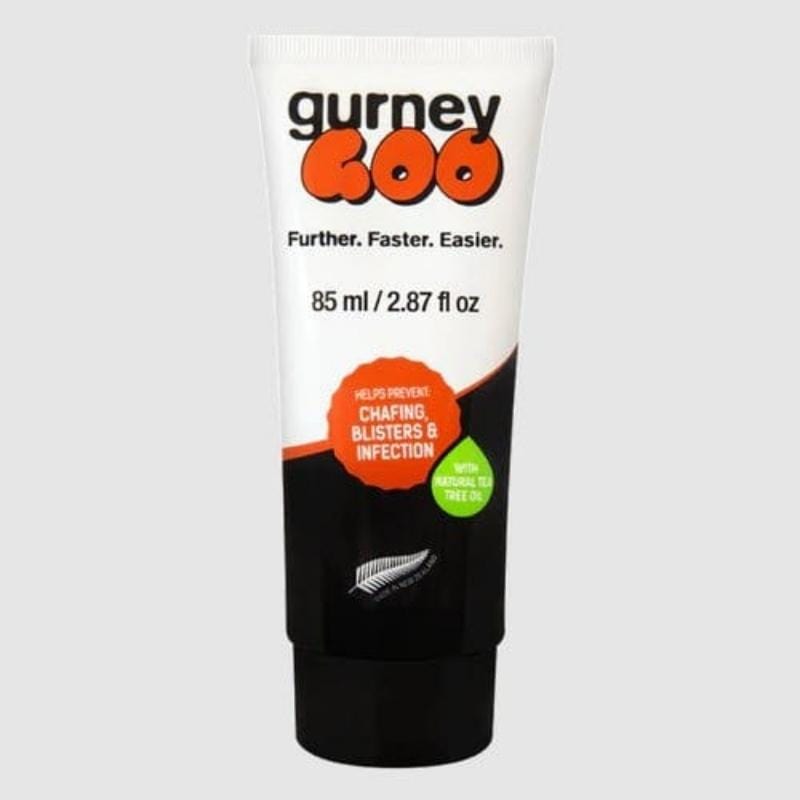There are literally hundreds of blister prevention lubricants on the market. It shows that skin lubrication remains a popular blister prevention strategy. Many runners and hikers remain blister-free using lube, cream, ointment, spray, wax and stick products.
Blister Prevention Lubricant Brands
- Vaseline
- BodyGlide
- Hydropel
- Trislide
- 2Toms Sportshield
- RunGoo, HikeGoo, WalkGoo - I’ve just discovered there’s a town in Queensland called Rungoo!
- Gurney Goo
- Moo Goo
- BagBalm
- Udder Balm
- Gold Bond
- Nok
- And many many more!
In this video, I have a bunch of topical blister products, mostly lubricants. I'll show you how they look, feel and smell, and how they work. From this, you can make your own purchasing decisions and conduct your own trial for your situation.
A Quote From Doug Richie DPM
Lubricants reduce friction levels. They do this very well, at least initially. However, research shows lubricants can be counterproductive to blister prevention.
"Physicians coaches and athletic trainers continue to advocate the use of petrolatum jelly and skin powders to prevent blisters while the scientific literature suggests these measures may actually increase the chance of blistering on the feet." .
Doug Richie DPM, 2010
5 Reasons Why Blister Prevention Lubricants Might Make Things Worse
Problem 1: Lack of Traction
Viscous lubricants reduce friction levels! You can see that in the 3rd graph below - the curve immediately drops below the baseline. This third graph pertains to viscous (greasy) lubricants (they tested petrolatum (aka Vaseline), mineral oil and glycerine). The first and second graphs are for mildly greasy and moderately greasy moisturisers. These increased friction straight away. So that's one thing to make sure of - that your lubricant is viscous and greasy, not just a moisturising cream.

Results from Nacht et al 1981 (reported in Wolfram, 1983): Graph a) Mildly greasy moisturisers and water Graph B) Moderately greasy moisturisers Graph c) Very greasy moisturiser
When you are dealing with friction levels, it's important to realise that friction is not bad. In fact it's necessary to give your foot a bit of traction in the shoe. When you put lubricant all over your foot, your foot loses traction. Without traction your foot moves around too much and your toes can hit the end of your shoe. Even slight pressure on the end of the nail, when repetitive, causes the nails to get ever so slightly thicker and thicker. Also, the lack of traction reduces your functional efficiency. That is, it reduces your ability to accelerate, decelerate and change direction. On uneven surfaces (eg: trail running), it can put you at higher risk of an injury like an ankle sprain or muscle overuse, because your muscles have to work harder to compensate for the lack of traction.
For these reasons, lubricating large areas of the foot, particularly the plantar (sole) surface may not be a good idea. In preventing blisters, the aim is not to reduce friction all over. A targeted approach is necessary. If you're using a lubricant, apply it only where needed!
Problem 2: Friction Levels Increase
The results from Nacht et al (1981) in the graph above show that although friction reduces initially, it later rises above the baseline friction level. So you should stop every 90 minutes or so and reapply to ensure you are still benefiting from reduced friction. If not, not only has your blister protection gone, you're actually at more risk of blistering.
Problem 3: Weakened Skin
Lubricants are occlusive which means they form a barrier to transepidermal water loss, a normal function of the skin. If water can't be released from the skin, it stays trapped within the skin, hyperhydrating it. This can cause it to become weaker and less able to resist trauma. A bit like how your skin goes when you’re in the bath for too long. Imagine then having to run, accelerate, decelerate, change direction etc on this weak wrinkly skin! In this way, lubricants probably work best in the short term.
Blister lubricants prevent transepidermal water loss, weakening the skin to Blister-causing shear forces
Problem 4: Attracting Grit
Greasy lubricants like Vaseline can be counter-productive particularly on off-road surfaces due to a tendency to attract grit. Sand and grit stuck to your skin increases the likelihood of other skin trauma like abrasions. In addition, Vaseline's carcinogenic properties have become a concern in recent times as it is a product of petroleum.
Problem 5: Retarding The Adhesion of Tapes and Dressings
Lubricants reduce the ability of adhesive tapes and dressings to stick to the skin. You'll find it difficult to combine the two preventive strategies of taping and lubricants. You'll also find it difficult to combine lubricants with blister dressings. This can get very tricky when you use a lubricant, it doesn't work and you get a blister, and then you want to apply an island dressing or plaster. It won’t stick!
How Else Can You Manage Friction?
This begs the question, if skin lubrication isn't a great way to manage friction, how do we reduce friction levels to prevent friction blisters, without these downsides?
There are many ways: certain socks (like Armaskin), powders (like 2Toms Blistershield), shoe patches (like ENGO Blister Patches), antiperspirants and possibly even tapes. Some of these work better than others. I particularly like shoe patches called ENGO Blister Patches because they:
- Provide an exceptionally low friction level
- This friction relief lasts day in, day out for 300 miles (~500kms)
- They allow your sock to protect your skin
- Take up no room in your shoe
- Can be used to maintain "good" friction
- Save you heaps of time!
Read more about how ENGO patches manage friction levels in all the right ways.
Conclusion
Using lubricants like Vaseline as a means of blister prevention may not be the ideal option for the reasons above. If it's already working for you, wonderful. If not, you've probably just found out why, and an alternative in ENGO patches.







